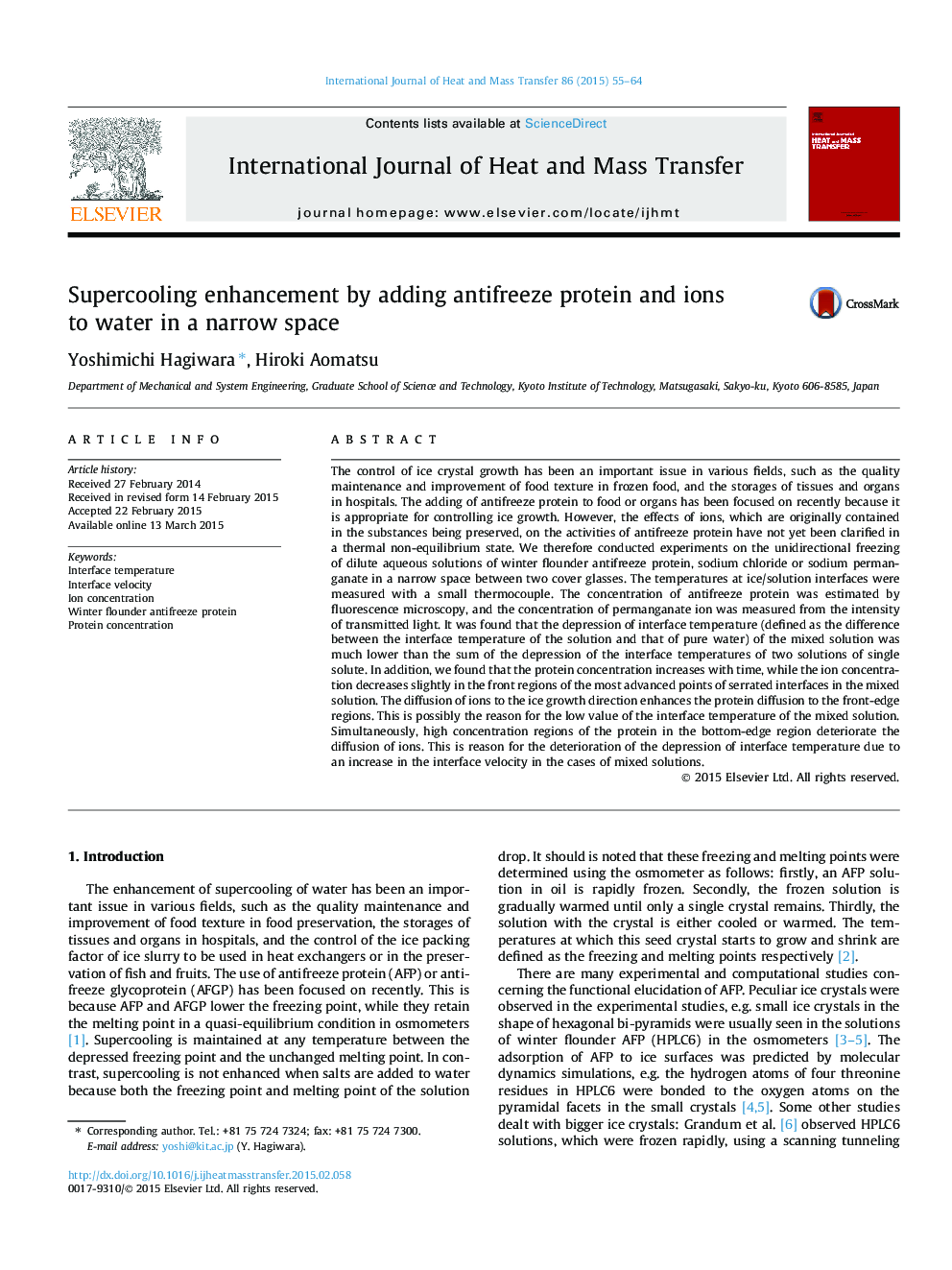| Article ID | Journal | Published Year | Pages | File Type |
|---|---|---|---|---|
| 656716 | International Journal of Heat and Mass Transfer | 2015 | 10 Pages |
The control of ice crystal growth has been an important issue in various fields, such as the quality maintenance and improvement of food texture in frozen food, and the storages of tissues and organs in hospitals. The adding of antifreeze protein to food or organs has been focused on recently because it is appropriate for controlling ice growth. However, the effects of ions, which are originally contained in the substances being preserved, on the activities of antifreeze protein have not yet been clarified in a thermal non-equilibrium state. We therefore conducted experiments on the unidirectional freezing of dilute aqueous solutions of winter flounder antifreeze protein, sodium chloride or sodium permanganate in a narrow space between two cover glasses. The temperatures at ice/solution interfaces were measured with a small thermocouple. The concentration of antifreeze protein was estimated by fluorescence microscopy, and the concentration of permanganate ion was measured from the intensity of transmitted light. It was found that the depression of interface temperature (defined as the difference between the interface temperature of the solution and that of pure water) of the mixed solution was much lower than the sum of the depression of the interface temperatures of two solutions of single solute. In addition, we found that the protein concentration increases with time, while the ion concentration decreases slightly in the front regions of the most advanced points of serrated interfaces in the mixed solution. The diffusion of ions to the ice growth direction enhances the protein diffusion to the front-edge regions. This is possibly the reason for the low value of the interface temperature of the mixed solution. Simultaneously, high concentration regions of the protein in the bottom-edge region deteriorate the diffusion of ions. This is reason for the deterioration of the depression of interface temperature due to an increase in the interface velocity in the cases of mixed solutions.
